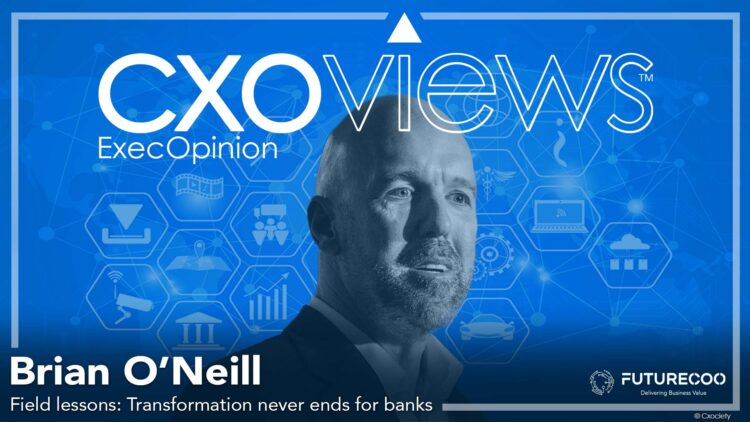In 2025, banking in ASEAN and Hong Kong is defined by a relentless convergence of forces: digitally native customers who expect banking to be embedded in their daily lives, a complex patchwork of regional regulations, and the pressing need to modernise legacy systems amid rising cyber threats and geopolitical shifts.
In this environment, transformation is no longer a discrete project but the core operating model. For a bank like Standard Chartered, with deep roots across these markets, this moment demands a strategy that is both bold and sustainable—treating technology as the engine of customer value, regulatory trust, and growth.
Transformation as strategy in motion
Standard Chartered's transformation is not a finite project—it's a continuous commitment to better serve clients and deliver on strategic priorities.

"We are continually seeking opportunities to accelerate our transformation in service of our strategy and to better serve our clients, whether that is through large-scale programmes or through continuously improving our processes and how we work day-to-day," says Brian O'Neill, global head for group transformation at Standard Chartered.
This means investing in future-ready skills, harnessing AI and emerging technologies, and simplifying the bank's operations. The outcomes so far—greater resilience, enhanced efficiency, and improved client and colleague experiences—reflect meaningful progress.
Yet, as O'Neill acknowledges, "Whilst we have made good progress in our transformation by making things easier and simpler, there is lots more work underway to simplify, strengthen and grow the Bank for the long term."
The triple challenge: Foundations, alignment, and execution
Transforming a global institution like Standard Chartered demands more than new tech—it requires rethinking people, processes, and platforms.
According to O'Neill, success hinges on three pillars: end-to-end oversight of transformation initiatives, prioritisation of client- and compliance-critical programmes, and organisation-wide alignment to a common strategic goal—namely, combining cross-border capabilities with wealth management excellence and strong sustainability credentials.
"In our case, that is the delivery of our strategy to combine differentiated cross-border capabilities with leading wealth management expertise, supported by excellent sustainability credentials." Brian O'Neill
"Transformation of large financial institutions… is never a one-and-done exercise," he cautions, highlighting the need for sustained focus on foundational capabilities, culture, and operating models.
Balancing standardisation with local agility
Operating across nearly 40 markets—from ASEAN to Hong Kong—means navigating a complex patchwork of regulations, including those from HKMA, MAS, and RBI. Standard Chartered's response?
O'Neill stressed that "Our network and how we connect clients to growth opportunities across the markets in which we operate is a differentiator for us."
A hybrid approach: "standardise as much as possible but also allow for configurability so that local regulations and requirements can be accommodated." He affirmed that this "not only supports efficiency of our operations but also leads to a more seamless client and colleague experience across our markets."
A flagship example is the bank's effort to harmonise its core banking system onto a single version across markets. "This will eliminate the need for repeated capability development and upgrades across multiple versions," concedes the bank's global head of group transformation.
Coupled with cloud adoption, this not only drives cost efficiency and resilience but also accelerates entry into new markets while reducing downtime during upgrades—critical in fast-moving digital economies.
AI in action—With responsibility
O'Neill says the bank has "been harnessing the transformative power of data and AI to drive innovation, anticipate client needs and amplify our strategic advantages in cross-border transactions, affluent client services, and sustainability initiatives."
AI and data are already delivering tangible results. SC GPT empowers colleagues with real-time support for research, translation, and content generation, while the FX Intelligent Expert—built with LSEG—delivers live market insights to clients via AI-powered video.
Yet O'Neill is clear-eyed about the risks: "Use of AI comes with challenges from an operational, technical, ethical, and regulatory perspective."
To govern this responsibly, Standard Chartered established its Responsible AI Council in 2020, ensuring innovation advances within ethical and compliance guardrails—a vital lesson for banks deploying generative AI at scale.
Despite this, O'Neill concedes that "use of AI comes with challenges from an operational, technical, ethical, and regulatory perspective and we manage for these risks through a Responsible AI Council which we established in 2020 to promote safe and ethical use of data and AI."
2026 theme: Fit for growth and beyond
In 2026, the bank's top priority is completing its Fit for Growth (FFG) programme—a significant efficiency and digitisation initiative aimed at standardising and simplifying operations.
But transformation goes beyond systems: "Our people are central in making change happen," O'Neill emphasises.
That's why the bank is investing in PM/PMO capabilities, career pathways, and change leadership. The goal? To not just execute change, but to institutionalise the ability to deliver it reliably and at speed.
A blueprint for sustainable transformation
O'Neill's insights offer a practical playbook for any organisation navigating complex, large-scale change. He stressed that clarity of purpose, cross-functional alignment, and honest problem-solving are non-negotiables.
"A transformation won't be successful if people don't understand what they're doing, why they're doing it, and how they are achieving it." Brian O'Neill
He reiterates the importance of accountability – "Really knowing who is responsible for what, not just so that people know who to consult with to get things done, but more importantly so that any gaps can be identified early on to avoid any finger pointing."
Recognising that not everything will go smoothly, he stresses the importance of "addressing problems when they are discovered. The worst thing is not knowing when there is a problem."
Equally critical is celebrating milestones—because transformation is as much about momentum as it is about mechanics.
For banks in ASEAN and Hong Kong, where digital expectations, regulatory complexity, and competitive intensity are converging, Standard Chartered's journey underscores a vital truth:
Sustainable transformation isn't about perfection—it's about persistence, responsibility, and putting people and clients at the heart of every change.



